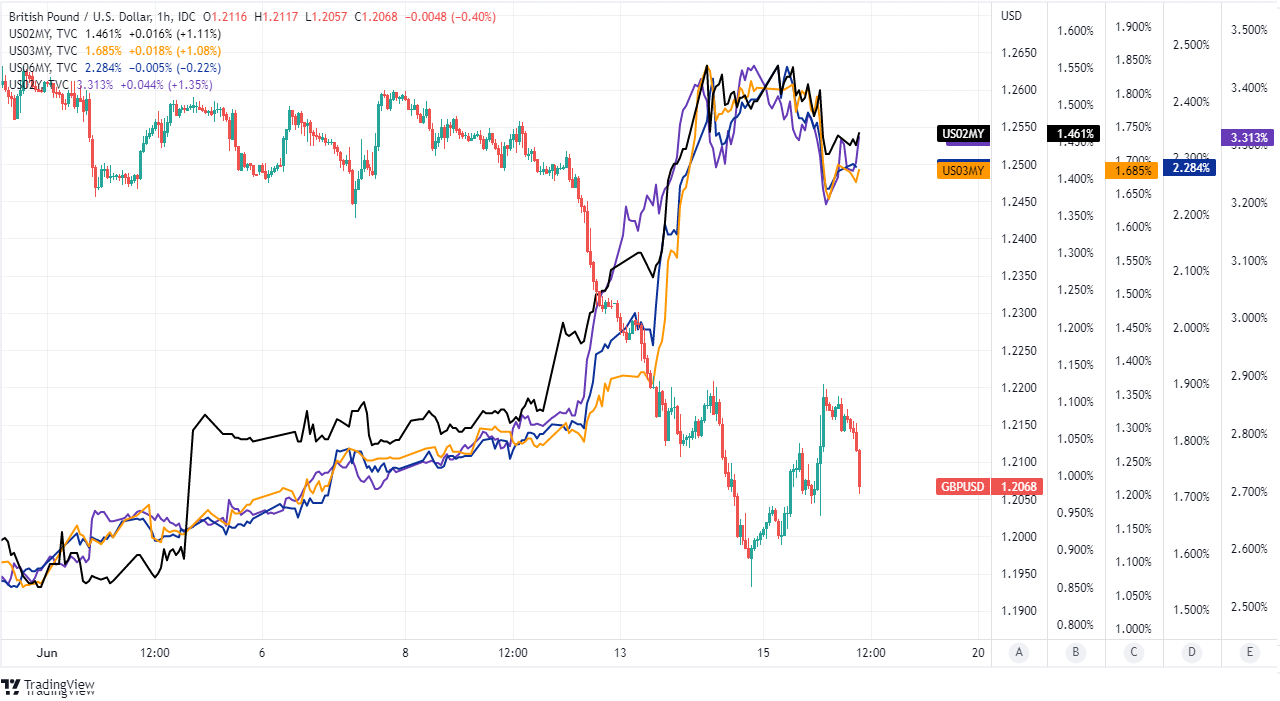U.S. Dollar Steadies in Europe as Fed Eyes "Moderately Restrictive" Rates
- Written by: James Skinner
-
“The sentence that we deleted said that we believe appropriate monetary policy alone can effectively bring about the result of 2% inflation with a strong labour market and so much of it is really not down to monetary policy,” Fed Chairman Jerome Powell.

© U.S. Government Works
Dollar exchange rates pared away overnight losses in Europe on Thursday after Chairman Jerome Powell said there is broad support at the Federal Reserve (Fed) for lifting its interest rate to a “modestly restrictive” level during the months ahead in remarks that validated financial market expectations.
Chairman Jerome Powell told reporters there was a widely held view on the Federal Open Market Committee that U.S. interest rates may need to rise to a “modestly restrictive” level in a prompt fashion after the Fed announced its largest increase in the Fed Funds rate for decades on Wednesday.
“Just talking about the SEP [forecasts] for a second, what it really says is that policymakers widely would like to see policy at a modestly restrictive level at the end of this year,” he said at the press conference.
“Remember how highly uncertain this is, but that is generally a range of three to three and a half percent. That’s where people are. That’s where they want to be knowing what we know now,” he added shortly after.
This was after the Fed lifted its interest rate by 75 basis points to 1.75% and indicated strongly that it would also be likely to meet market expectations for the benchmark at year-end, which have recently risen to around 3.5%.

“I’d say the next meeting could well be about a decision between 50 and 75. That would put us at the end of the July meeting, in that range, in that more normal range,” Chairman Powell also said.
"That’s a desirable place to be because you begin to have more optionality there about the speed with which you would proceed going forward," he added.
The Fed became significantly more hawkish when suggesting it would be aiming for a “modestly restrictive” level of interest rates by year-end.
That was a step up from the bank's earlier inclination toward a ‘neutral range’ that is estimated to be somewhere between 2% and 3% but financial markets had already come to anticipate it after inflation accelerated in the wrong direction with a 1% increase to 8.6% in May.
“Contrary to expectations inflation again surprised to the upside, some indicators of inflation expectations have risen and projections of this year have moved up notably so we thought strong action was warranted at this meeting, and today we delivered that,” Powell said.
The Fed said nothing on Wednesday that could be taken as an incitement for the market to raise its expectations for interest rates further.
Accelerating inflation and rising interest rates were part of why FOMC members cut forecasts for GDP growth and lifted projections for unemployment so that it's now seen peaking at 4.1% in 2024, up from 3.6% in March.
Forecast changes and the Fed’s deletion of a sentence from its previous statement drew questions from reporters about what the bank’s policy actions could mean for the economy and job market in the years ahead.
“The sentence that we deleted said that we believe appropriate monetary policy alone can effectively bring about the result of 2% inflation with a strong labour market and so much of it is really not down to monetary policy,” Powell said
“It kind of says on its face that monetary policy alone can do this and that just didn’t seem appropriate so we took the sentence out,” he added.
The Fed statutory mandate leaves it with little choice but to raise interest rates in order to bring inflation back down to the 2% target while doing what it can to preserve as much employment as it can.
The Fed's task is complicated by the nature of the inflation at work, however.
“There are pathways to do it but those pathways have become much more challenging due to factors that are not under our control. I’m thinking of the fallout of the war in Ukraine, which has brought a spike in prices of energy, food, fertiliser, industrial chemicals and also just the supply chain disruptions broadly, which have been larger and longer than expected,” Powell said.
Inflation has been lifted across the globe in the last year by the reduced availability of crucial items like fossil fuels, energy, foods and some manufactured products, among other things.
These ‘supply side’ deficits are, if anything, the domain of Congress and the White House but the inflation resulting from them has left the Fed trapped between a rock and a hard place.
“The monetary policy stance doesn’t affect those things,” Powell said.

